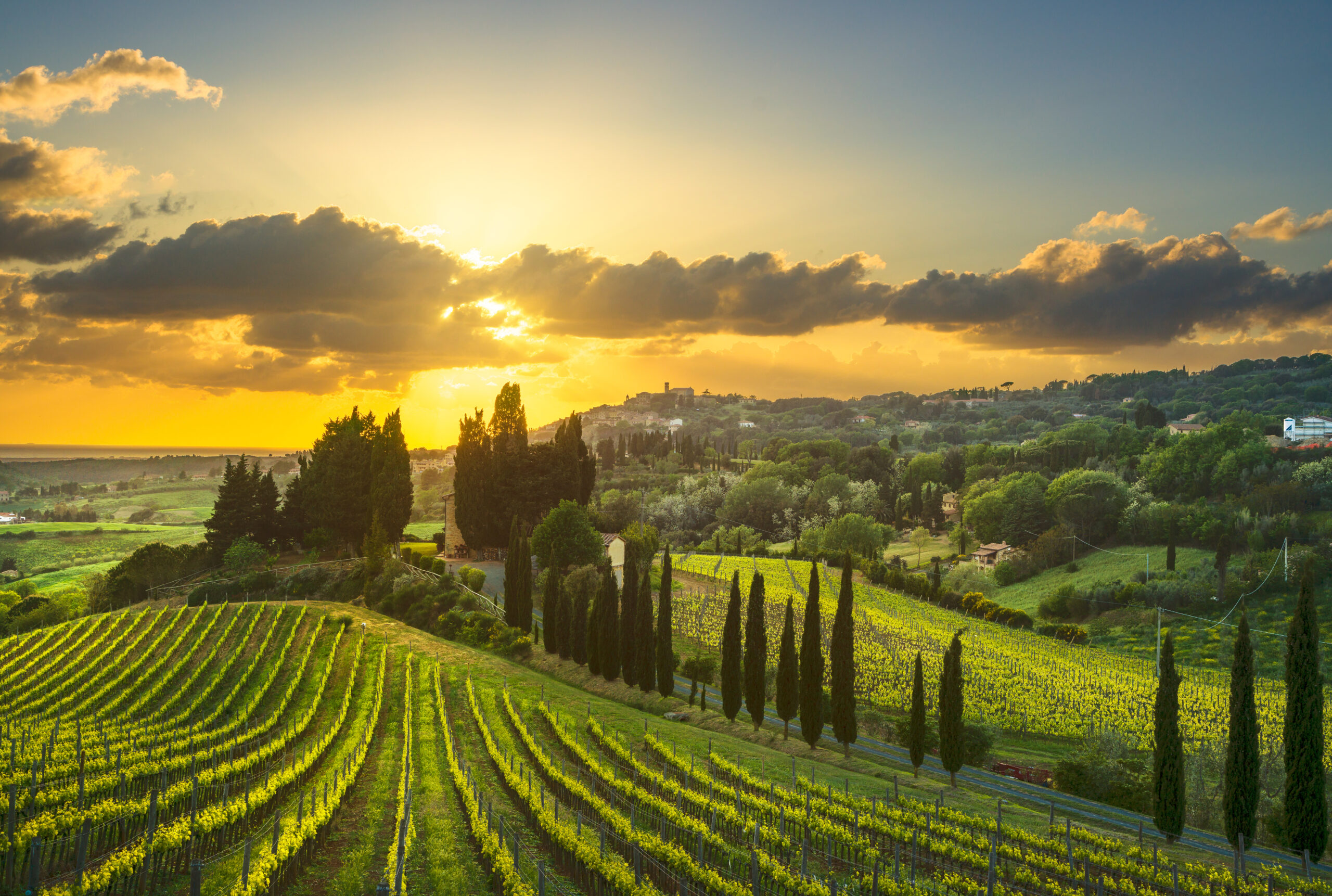I still remember my first sip of a Tuscan wine—deep ruby in the glass, bursting with red cherries, a hint of earthiness, and that unmistakable balance of acidity and tannin. It was magic in a bottle, and it left me wondering: what really defines a Tuscan wine? And how do Super Tuscan wines and Chianti Classico fit into the picture?
If you’ve ever been confused by these terms, you’re not alone. Tuscany is one of the most famous wine regions in the world, but within it, there are layers of history, tradition, and innovation that make it truly fascinating. So, let’s break it down in a way that makes sense—and, of course, makes you thirsty for a glass of something delicious!
What Is a Tuscan Wine?
Tuscany, located in central Italy, is a wine lover’s paradise. This region is home to rolling vineyards, sun-soaked hills, and some of the most recognised wines in the world. Tuscan wines aren’t just one type of wine—they include a range of styles, from everyday table wines to age-worthy reds that can rival the best Bordeaux.
At the heart of Tuscan winemaking is Sangiovese, the region’s most famous grape. It’s the backbone of Chianti, Brunello di Montalcino, Vino Nobile di Montepulciano, and many other traditional wines. Sangiovese gives wines their signature red fruit flavours, bright acidity, and firm tannins—perfect for pairing with rich Italian cuisine.

Chianti Classico: The Heart of Tradition
When most people think of Tuscany, they think of Chianti. But not all Chiantis are created equal! Chianti Classico is the most historic and prestigious part of the Chianti region, with winemaking traditions dating back to the Middle Ages.
To be labelled Chianti Classico, a wine must be made with at least 80% Sangiovese and come from a specific area between Florence and Siena. These wines are known for their bright cherry flavours, herbal notes, and balanced acidity. The best bottles develop layers of complexity with age, revealing hints of leather, tobacco, and spice.
You can always recognise a Chianti Classico by the black rooster (Gallo Nero) symbol on the bottle—a sign that you’re getting an authentic, high-quality wine.
Super Tuscan: The Rebels Who Changed the Game
Now, this is where things get interesting. In the 1970s, some Tuscan winemakers decided to break the rules. They felt restricted by the strict regulations governing Chianti and wanted to experiment with international grape varieties like Cabernet Sauvignon, Merlot, and Syrah. The result? Super Tuscan wines—a category that didn’t officially exist at first but quickly gained worldwide recognition.
Unlike Chianti Classico, which must follow traditional rules, Super Tuscans allow winemakers full creative freedom. These wines often blend Sangiovese with Bordeaux-style grapes, resulting in richer, more full-bodied wines with softer tannins. Some of the most famous Super Tuscans—like Sassicaia, Tignanello, and Ornellaia—have become some of Italy’s most sought-after wines.
So, Which One Should You Try?
If you love tradition and bright acidity, Chianti Classico is the way to go. It’s the perfect wine for classic Italian dishes like pasta with tomato sauce, grilled meats, or aged Pecorino cheese.
If you’re after something bold and modern, a Super Tuscan will blow you away. These wines are ideal for pairing with steak, rich stews, or even a luxurious cheese platter.
And if you simply want to explore Tuscan wines, you have a whole world to discover—from Brunello’s depth and power to the charming freshness of Vernaccia di San Gimignano.
Final Thoughts
The beauty of Tuscan wines lies in their diversity. Whether you choose a time-honoured Chianti Classico or a rebellious Super Tuscan, you’re experiencing centuries of winemaking heritage in every sip.
So next time you pour yourself a glass of wine, take a moment to appreciate the history behind it. And if you haven’t yet explored the world of Tuscany, Chianti Classico, and Super Tuscans, consider this your invitation to start!
Cheers or as the Italians say, Salute!






